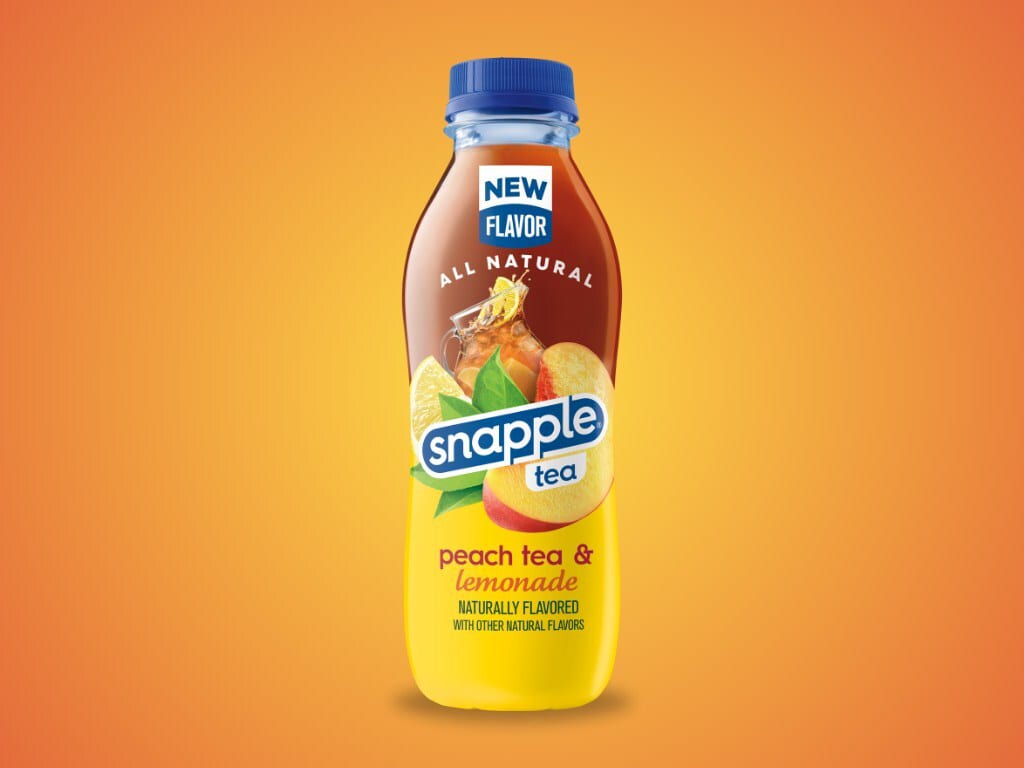Category Focus
Tea’s new recipes for growth
Flavor, functional benefits offer opportunities for category innovations
By Jessica Jacobsen
(Photo by Liudmila Chernetska/iStock / Getty Images Plus via Getty Images)
In Erykah Badu’s song “On and On,” she ponders issues plaguing her mind, but when that reflection gets overwhelming, she turns to a popular beverage to ease her anxiety. “I think I need a cup of tea, the world keeps burnin’/Oh, what a day, what a day, what a day.”
Consumers association with tea for its calming properties has been well-documented not just in song. In the Tea Association of the U.S.A. Inc.’s most recent Tea Fact Sheet, it notes this, among other product attributes that contributed to the category’s performance in 2024.
“Consumers drank tea to ease stress, relax, calm, and center themselves,” the Fact Sheet states. “Additionally, research validating tea’s ability to boost immune systems certainly helped, as did a recent peer-reviewed paper on bio-actives in tea highlighting tea as the best source of these important compounds.”

Earlier this year, Keurig Dr Pepper (KDP) unveiled its 2025 new flavor lineup in the U.S., including Snapple Peach Tea & Lemonade, a peach tea flavor with a citrusy tang of classic lemonade, it says.
(Image courtesy of Keurig Dr Pepper)
Roger Dilworth, senior analyst at Beverage Marketing Corporation (BMC), Wintersville, Ohio, notes that the wellness aspects of tea have been well-documented, but the ready-to-drink (RTD) segment has other attributes that have counteracted those aspects.
“Some of the health-and-wellness attributes of tea seem to have been accounted for already, i.e., the focused energy of l-theanine and caffeine that tea brings to the table,” he says. “RTD teas are often sugar-laden, which counteracts some of the health message. And the ones that have less sugar are doing satisfactorily but have yet to ignite the RTD tea segment.”
However, Paige Leyden, research manager of foodservice for the U.S. at Chicago-based Mintel, writes in its 2024 report “Tea and RTD Tea – US” that when it comes to tea’s attributes, manufacturers have an opportunity to expand the traditional aspects that consumers might associate with the category.
“Tea drinkers are more likely to associate tea with relaxation and comfort than as a source of energy,” she states in the report. “While relaxation is important, given the prevalence of stress in modern times, there’s also opportunity to promote tea as a viable option for boosting productivity and clear focus.”
Leyden also writes that among the top claims across the segment, environmental stewardship can be seen throughout.
“While this ethical approach is admirable, consumers are more apt to seek a personal benefit first,” she writes in the report. “Especially amid times of price hikes, brands can more directly prove value through personal benefit.”

Guayakí Yerba Mate will add bold new flavors and fresh formats to its lineup, including Sparkling Cherry Jubilation, a take on an OG classic, the Shirley Temple.
(Image courtesy of Guayakí Yerba Mate)
This all comes after the FDA released in December 2024 its final rule on the use of “healthy” on food labels. The foods and beverages that qualify to bear the claim meet limits on added sugar, sodium, and saturated fats, based on Daily Value recommendations within the Dietary Guidelines for Americans 2020-2025.
Certain tea products, including tea bags and bottled tea, can now display the “healthy” claim on packaging, provided they contain less than 5 calories in each 12-ounce ounce serving, according to the Tea Council of the USA Inc.
“We are thrilled that the FDA’s new ruling officially recognizes unsweetened tea as a ‘healthy’ choice,” said Peter Goggi, president of the Tea Council of the USA, in a statement at the time of the announcement. “For decades, we’ve known that tea delivers significant health benefits, and now consumers can more easily identify it as a ‘healthy’ choice right on the label. This designation not only validates tea’s role in a balanced diet, but will also encourage more Americans to reach for this naturally refreshing, calorie-free beverage.”
Product innovation for the future
These recommendations for the tea market come as it looks to rebound as the category sees more competition for other beverage categories.
“The overall tea market declined in volume by 1.9% in 2024, with RTD tea decreasing by 1.3%. Retail dollar growth for both hovered around the 1% mark,” BMC’s Dilworth says. “None of the tea segments flourished in 2024 in terms of volume. The only bright spot was loose tea, which had about a 7% increase in retail dollar sales.”
As Dilworth noted earlier, for RTD tea, sugar reduction trends have a had a negative impact on the segment.
“If anything, the sugar reduction trends have caused some consumers to exit the category altogether in favor of PET water, sparkling water and functional beverages,” he says.
In Mintel’s report, Leyden notes that tea’s sales gain have come while volume declines have persisted.
“Tea has posted steady dollar sales gains in recent years. However, a closer look reveals the gains are a result of price increases amid a climate in which consumers are drinking less tea,” Leyden notes in the report. “Brands must avoid alienating shoppers through continued price hikes, especially considering they’re lukewarm on their enjoyment of tea taste.”
In the Tea Association of the U.S.A.’s Fact Sheet, it does note that with the impact of inflation, dollar sales increased year on year, but also calls attention to the strong demand tea still holds from American consumers.
“In 2024, Americans consumed about 86 billion servings of tea, or approximately 4 billion gallons,” the Fact Sheet states. “About 86% of all tea consumed was black tea, 14% was green tea, and the small remaining amount was oolong, white, and dark tea.
“Through November [2024], YTD imports were substantially higher in 2024 vs. 2023 with both green and black teas advancing in volume vs. 2023: imports by some 26.8% and 16.5% respectively,” the Fact Sheet continues. “Traditional tea bag markets generally held their own in 2024 while out-of-home and specialty tea improved.”
BMC’s Dilworth also highlights the contributions of out-of-home and specialty teas.
“There is a glimmer of hope with tea cafés that have innovative tea drinks such as boba tea and ‘cheese’ tea,” he says. “Once confined to Asian enclaves, these cafés seem to have grown in number in white suburban areas, at least in some pockets of the country.”
Dilworth adds that mate tea has shown a growing popularity, but has not established itself in the RTD space.
Guayakí Yerba Mate, Sebastopol and Venice, Calif., is looking to change that with its biggest expansion yet. Earlier this year, the company announced it will add bold new flavors and fresh formats to its lineup. At the heart of this expansion is Sparkling Cherry Jubilation, a take on an OG classic, the Shirley Temple.
“Consumers tend to fall back on bottled waters for their perceived safety and better taste compared to tap water. Safety, health and convenience perks will drive continued growth of bottled waters.”
– Julia Mills, food and drink analyst at Mintel
“There is a glimmer of hope with tea cafés that have innovative tea drinks such as boba tea and ‘cheese’ tea. Once confined to Asian enclaves, these cafés seem to have grown in number in white suburban areas, at least in some pockets of the country.”
– Roger Dilworth, senior analyst at Beverage Marketing Corporation (BMC)
Also joining the lineup are Bravo Mango, Strawberry Hibiscus and Summer Peach. The company also enhanced fan-favorite varieties with bolder taste and new names, such as Awakening Orange, Citrus Spark and BerryMint Bliss.
“Yerba mate is having a moment, and it's amazing to see more people embracing the vitality, balance, and connection it brings into daily life,” said Jennifer Brush, vice president of product innovation and brand at Guayakí Yerba Mate, in a statement at the time of the announcement. “With these new products, we’re celebrating the magic of mate in fresh, exciting ways — inviting even more people to share in the experience.”
Embracing flavor also could be a strategy for tea manufacturers going forward.
“Fewer than 40% of tea drinkers rate the most common types of tea as a taste they enjoy,” Leyden writes in Mintel’s report. “Given that flavor leads food/drink choice, the category must boost its taste perception in order to compete with other beverages. Tea introductions that score highest for ‘tasty’ promote bold flavors, sweetness and familiar ingredient blends.”
The Tea Association of the U.S.A. also points to flavor as among the attributes that the tea category can offer consumers to help it rebound following the impact experienced from COVID and supply chain issues in 2022-2023.
“Tea’s variety, convenience, health benefits, sustainability efforts, availability, continued innovation, and the discovery of unique, flavorful, and high-end specialty teas will continue to provide the fuel,” the Fact Sheet states. “Long term success relies on the continued adoption of tea by new consumers who constantly seek healthy food and beverage choices. We are seeing this exact behavior, particularly from millennials, Gen Z’s, and baby boomers.”
Whether its brewed at home or ready-to-drink, the tea category is stepping up efforts to deliver what consumers are thirsting for.
